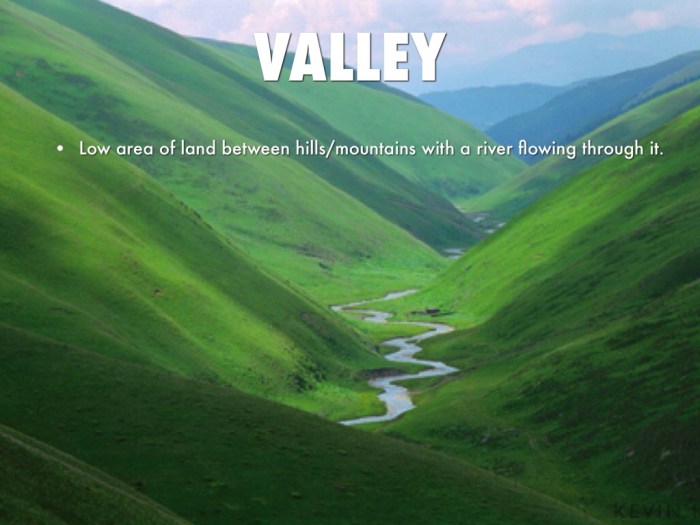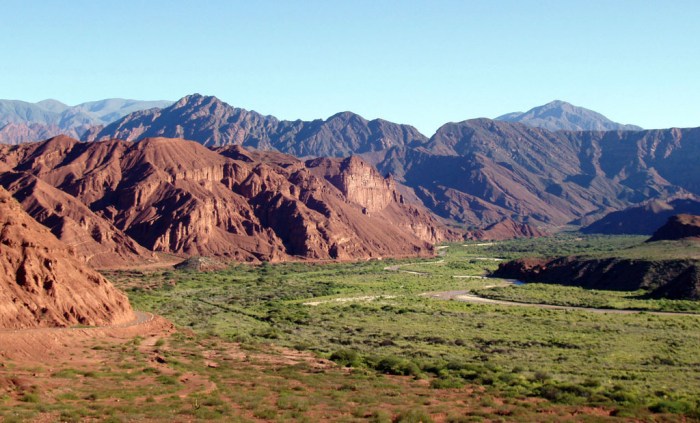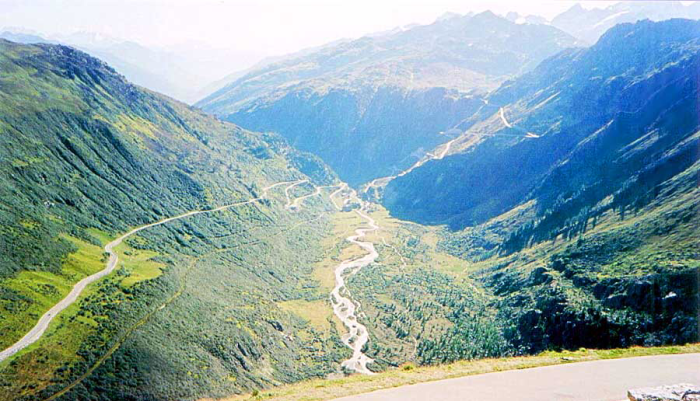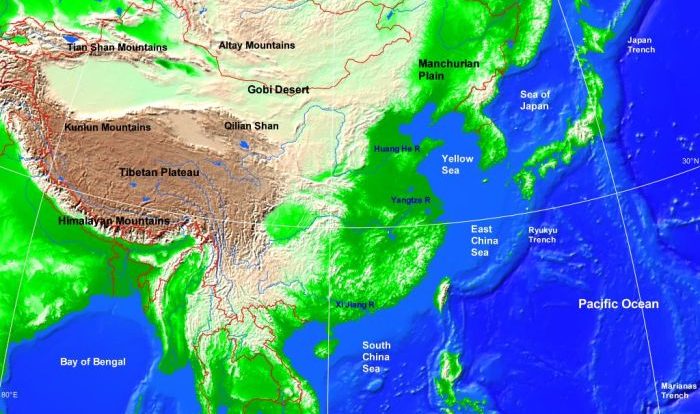How are the river valleys of wyoming and montana similar – The river valleys of Wyoming and Montana, nestled amidst the grandeur of the Rocky Mountains, exhibit remarkable similarities that have shaped their landscapes, ecosystems, and human interactions. This exploration delves into the geological, hydrological, climatic, and human-related aspects that intertwine these valleys, revealing a fascinating tapestry of shared characteristics.
Geology and Topography
The river valleys of Wyoming and Montana were shaped by a combination of geological processes, including tectonic uplift, erosion, and glaciation. The region is underlain by a complex array of sedimentary and igneous rocks, including sandstone, limestone, shale, granite, and volcanic ash.
The river valleys are characterized by steep canyon walls and narrow floodplains. The elevation of the valleys ranges from 4,000 feet (1,200 meters) in the foothills to over 10,000 feet (3,000 meters) in the mountains. The slopes of the valley walls are typically steep, with gradients of 30% or more.
Bedrock and Soil Composition, How are the river valleys of wyoming and montana similar
The bedrock of the river valleys is composed primarily of sedimentary rocks, such as sandstone and limestone. These rocks are relatively soft and easily eroded by water and ice. The soil in the river valleys is typically sandy and well-drained.
Elevation, Slope, and Aspect
The elevation, slope, and aspect of the river valleys vary depending on the location. In general, the valleys are higher in elevation and have steeper slopes in the mountains than in the foothills. The aspect of the valleys also varies, with some valleys facing north and others facing south.
Hydrology and Water Resources

The rivers in Wyoming and Montana are characterized by snowmelt-dominated flow regimes. The rivers typically flow at their highest levels in the spring and early summer, when the snowpack in the mountains melts. The rivers flow at their lowest levels in the late summer and fall.
The water quality of the rivers is generally good, with low levels of pollutants. However, some rivers in the region have been impacted by mining and other human activities.
Water Flow Patterns and Discharge Rates
The water flow patterns and discharge rates of the rivers in Wyoming and Montana are similar. The rivers typically have a peak flow in the spring and a low flow in the late summer and fall.
Role of Precipitation, Snowmelt, and Groundwater
Precipitation, snowmelt, and groundwater all play important roles in shaping the river valleys in Wyoming and Montana. Precipitation provides the water that flows through the rivers. Snowmelt is the primary source of water for the rivers in the spring and early summer.
Groundwater provides a base flow for the rivers during the late summer and fall.
Water Quality and Sediment Transport Characteristics
The water quality of the rivers in Wyoming and Montana is generally good, with low levels of pollutants. However, some rivers in the region have been impacted by mining and other human activities.
The sediment transport characteristics of the rivers in Wyoming and Montana vary depending on the location. In general, the rivers transport more sediment in the mountains than in the foothills.
Climate and Vegetation: How Are The River Valleys Of Wyoming And Montana Similar

The climate of Wyoming and Montana is characterized by cold winters and warm summers. The average annual temperature in the region is 45 degrees Fahrenheit (7 degrees Celsius). The average annual precipitation in the region is 15 inches (38 centimeters).
The vegetation in the river valleys of Wyoming and Montana is diverse, and includes a mix of grasslands, forests, and shrublands. The dominant vegetation types in the region are sagebrush steppe and ponderosa pine forests.
Climate Patterns
The climate patterns in Wyoming and Montana are similar. The region experiences cold winters and warm summers. The average annual temperature in the region is 45 degrees Fahrenheit (7 degrees Celsius). The average annual precipitation in the region is 15 inches (38 centimeters).
Influence of Climate on Vegetation Communities
The climate of Wyoming and Montana has a significant influence on the vegetation communities in the region. The cold winters and warm summers favor the growth of grasslands and forests. The low annual precipitation limits the growth of trees in some areas.
Plant Species Composition and Distribution
The plant species composition and distribution in the river valleys of Wyoming and Montana is diverse. The dominant vegetation types in the region are sagebrush steppe and ponderosa pine forests. Other common vegetation types include grasslands, shrublands, and riparian forests.
Human Impact and Land Use

The river valleys of Wyoming and Montana have been impacted by a variety of human activities, including agriculture, mining, and recreation. Agriculture is the dominant land use in the region, and the majority of the land is used for grazing livestock.
Mining is another important industry in the region. The river valleys have been mined for a variety of minerals, including gold, silver, copper, and coal.
Historical and Current Human Activities
The river valleys of Wyoming and Montana have been impacted by a variety of human activities, including agriculture, mining, and recreation. Agriculture is the dominant land use in the region, and the majority of the land is used for grazing livestock.
Impact of Agriculture, Mining, and Recreation
Agriculture, mining, and recreation have all had a significant impact on the river valleys of Wyoming and Montana. Agriculture has led to the conversion of native grasslands to cropland and pasture. Mining has led to the contamination of water and soil.
Recreation has led to the development of roads and trails, which can fragment wildlife habitat.
Land Use Patterns and Management Practices
The land use patterns and management practices in the river valleys of Wyoming and Montana vary depending on the location. In general, the land use is more intensive in the valleys than in the mountains. The valleys are used for agriculture, mining, and recreation.
The mountains are used primarily for forestry and recreation.
Answers to Common Questions
What are the key geological similarities between the river valleys of Wyoming and Montana?
Both valleys were shaped by tectonic forces, resulting in similar bedrock compositions and soil types, as well as comparable elevation profiles, slopes, and orientations.
How do the water flow patterns compare in these river valleys?
The rivers in both valleys exhibit similar discharge rates and flow patterns, influenced by precipitation, snowmelt, and groundwater contributions. They also share comparable water quality and sediment transport characteristics.
What role does climate play in shaping the similarities between these valleys?
The valleys experience similar temperature, precipitation, and wind patterns, which influence the vegetation communities found within them. Plant species composition and distribution show notable parallels, reflecting the shared climatic conditions.
How have human activities impacted the river valleys of Wyoming and Montana?
Agriculture, mining, and recreation have played similar roles in shaping the land use patterns and management practices within these valleys, leading to comparable historical and current human influences.
